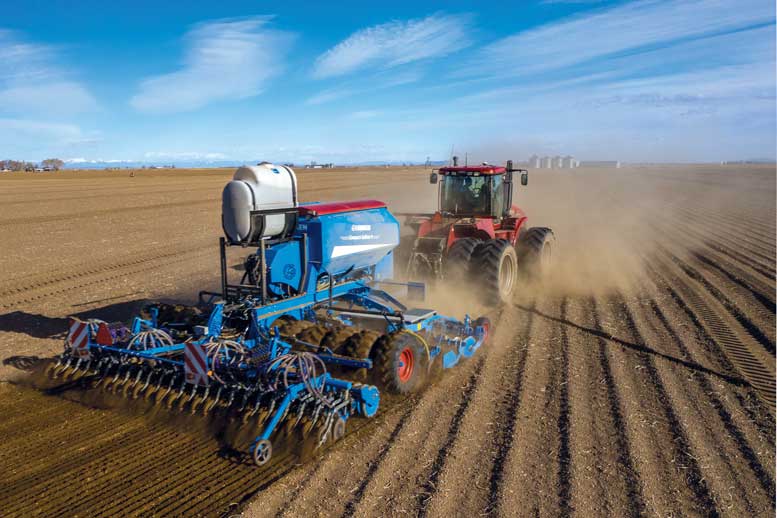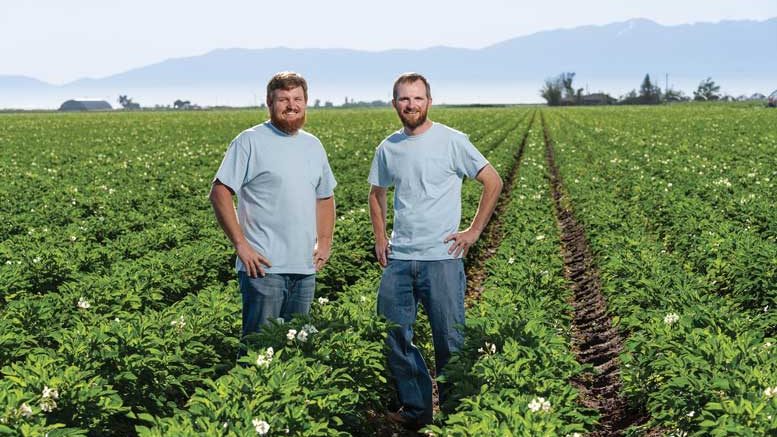Story by Denise Keller, Editor
Water is a precious resource on every farm, and Mike Mitchell Farms in Monte Vista, Colorado, is certainly no exception. A water shortage has been impacting the farm for more than a decade, prompting the growers to practice water-saving measures in their potato production.
Brothers Clay and Tyler Mitchell and their dad, Mike, farm 2,400 acres in Colorado’s San Luis Valley. This includes 1,000 acres of potatoes, with about 90 percent of the spud ground planted in russet varieties for the fresh market and the balance in yellow potatoes.
The Mitchells and other water users in the region are dealing with a declining aquifer. Crop patterns have changed since wells were dug in the 1960s and ‘70s, Mike says. Crops with higher water consumption have moved into growers’ rotations, and the intensity of farming has increased.
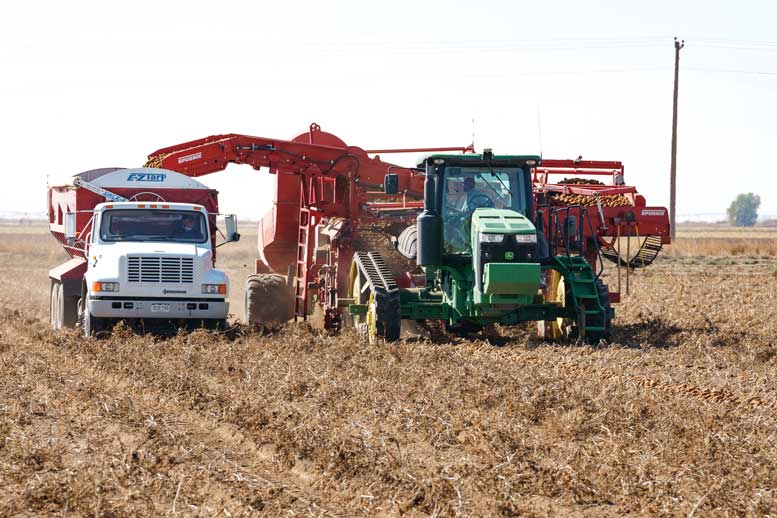
In an attempt to return the aquifer to a sustainable level, programs are in place to pay farmers to not pump irrigation water. However, even with the cutbacks, irrigators are still pumping more water than is coming into the system during drought years. Higher commodity prices make matters worse.
“Stronger commodity prices are a friend to the farmer but may be the enemy of the irrigator because it’s causing more demand on the water,” Mike explains. “People aren’t willing to cut back to save water. They’re able to pay the expenses and keep pumping.”
In addition to the depleting aquifer, the region has a desert climate with low humidity and about 9 inches of precipitation per year. Competition for land with surface water continues to drive up the cost of farm ground, which has doubled in the last 10 years, according to the growers.
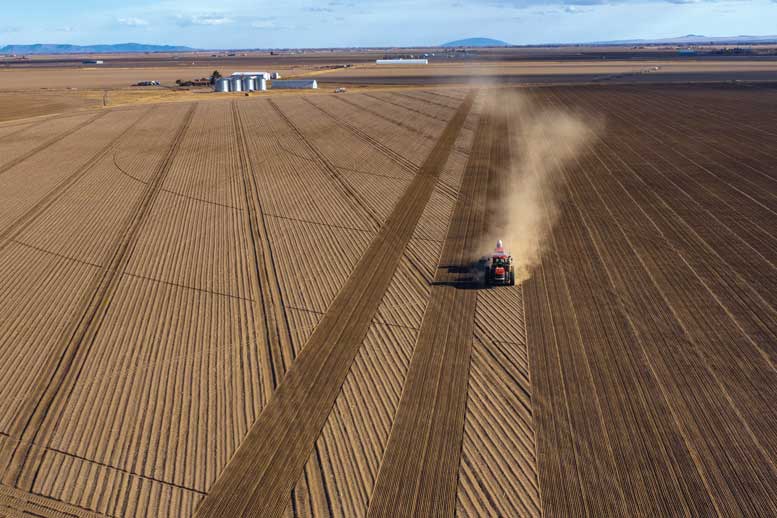
“With the amount of water we have and how bad the situation has gotten, we have to be progressive in water savings,” Clay says.
With the help of an irrigation consultant, the Mitchells have made changes to increase water efficiency on the farm. They installed new nozzles on all their sprinklers and utilize smart irrigation scheduling with soil moisture monitoring. And they time year-end tilling with rain or snowfall to save irrigation.
The growers have also selected potato varieties that require less water and have modified their rotation crops, as well. In the last two years, they eliminated malt barley in order to save the expense of pumping extra water. They continue to grow quinoa, which uses 8 inches of water less than a barley or potato crop. The rotation also includes a green manure crop for soil health, grown with 6 to 8 inches of water.
“The biggest challenge is short-term sustainability versus long-term conservation,” Clay says. “We’re trying to do things to limit erosion and limit our water use, but at the same time, we have to stay in business. So we can’t make huge jumps. It has to be an evolution to get more efficient.”
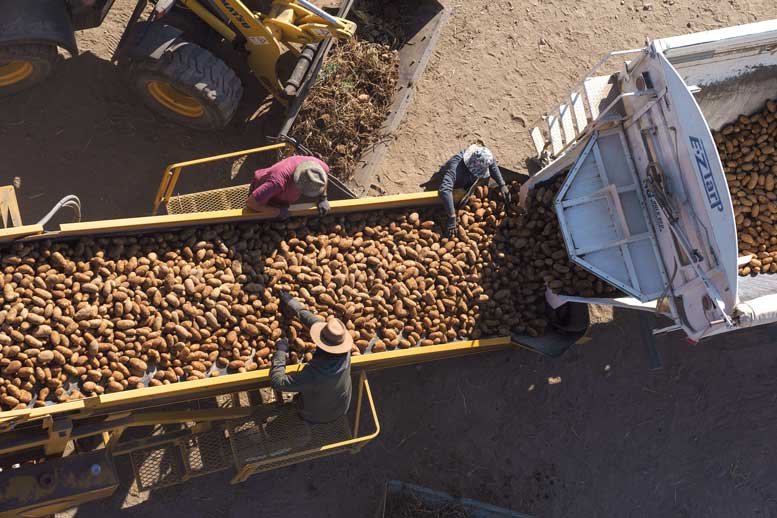
Supply and Demand
Growing predominately for the fresh market, the Mitchells take on the challenge of balancing supply with demand.
“As farmers, we can definitely oversupply the market. Farmers are pretty good at what they do. And if something is profitable, we produce more of it to the point that it becomes unprofitable,” Clay says. “I think that’s the balance with potatoes is to keep the supply matched with demand so it stays profitable.”
Aligning supply and demand has been especially difficult since the beginning of the COVID-19 pandemic in March 2020. At the time, the Mitchells had purchased seed and prepped fields but had not yet planted potatoes. They were able to slightly modify plans before planting at the end of April, including eliminating half of a circle and growing a smaller size profile better suited for retail sales.
Still, Colorado growers ended up with too many potatoes, and the delayed reopening of businesses left the Mitchells with potatoes in storage about a month later than usual. This year, they stayed the course and planted their usual crop with hopes that the economy and potato sales will return to normal.
The Next Generation
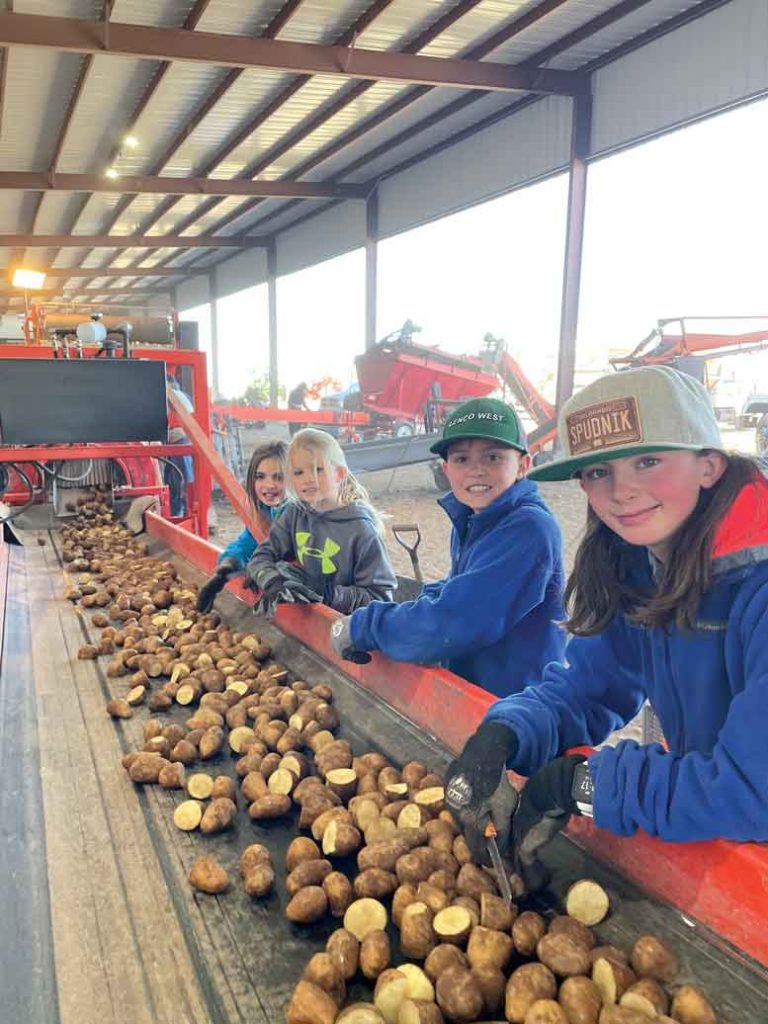
Clay and Tyler are third-generation farmers in Colorado. Their grandfather Marvin and his brother Roger relocated from Nebraska in the late 1930s, worked on a dairy and began sharecropping potatoes. In the early 1950s, they were among the first in the San Luis Valley to transition from hand harvest operations to mechanical harvesting, with a tractor-pulled harvester loading spuds directly into a bulk truck, Mike says. The brothers divided the farm in 1960.
Mike returned from college to take over his dad’s farm in 1976. After growing up on the farm, Clay and Tyler studied agriculture at Colorado State University, graduating in 2004 and 2006, respectively, before returning to the farm. Mike says Clay and Tyler’s desire to follow in his footsteps motivated him to continue farming. About a year ago, the time was right to sell the farm to his sons.
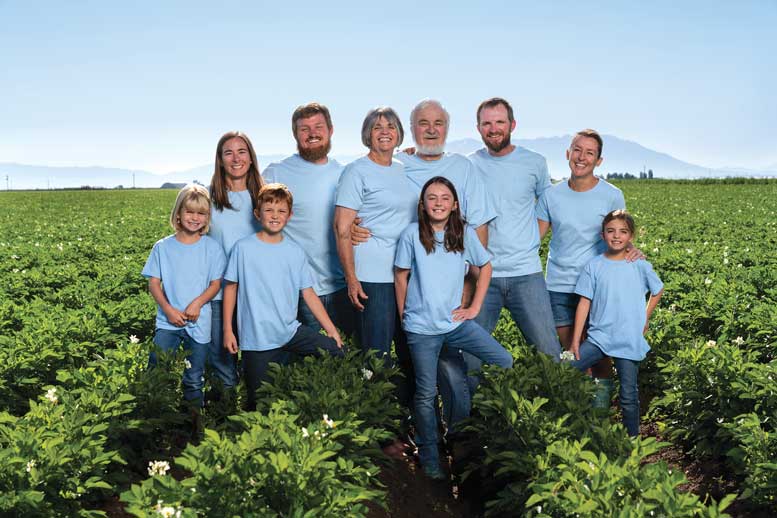
“The one thing that encourages me is in the 15 years I’ve been farming with the boys, the farm has continued to increase production. Production costs have followed, but their consciousness of what it takes to produce a crop is probably greater than I ever had,” Mike says. “My advice to them would be to stay on top of the changes and be aware of the surprises that can happen. Try to be solid enough that you can weather the bad storms because that’s the nature of the potato industry; you can have a bad year every so often.”
To weather those storms, Clay says it’s important to be aware of market conditions, make sure your salespeople have a home for the potatoes you plan to grow and to produce high quality potatoes so customers come back for more. Tyler agrees that careful crop management, along with proper variety selection, will help the farm be successful.
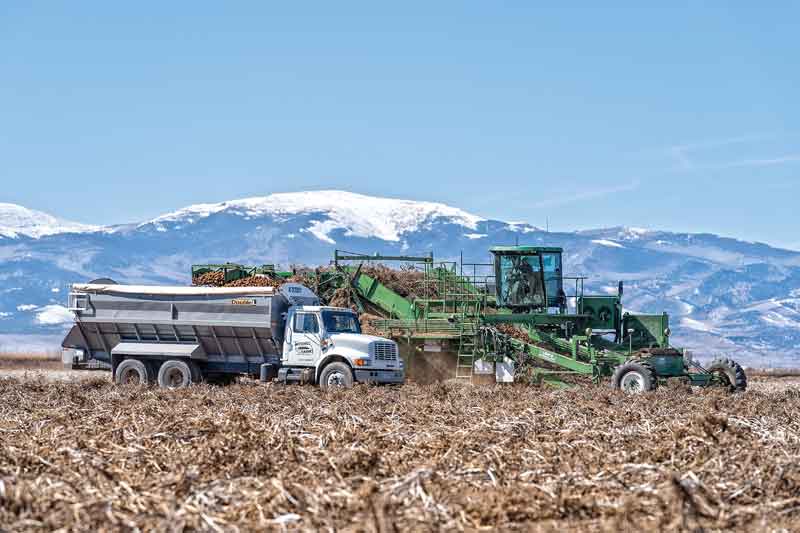
“My favorite thing about farming is always continually trying to improve,” Tyler says. “We make mistakes every year, but we learn from those mistakes and always try to grow a higher yielding or higher quality crop every single year. That’s what excites me. We can always do better.”
Recent efforts to grow a better crop include moving to more vertical tillage. By completing multiple processes in a single pass, the growers are achieving the cultivation they want with less disturbance of the soil. They also purchased new planters to get better stands and a new harvester to dig in rockier ground.
In addition to farming, the Mitchells are involved with National Potato Council, the Colorado Potato Administrative Committee and United Potato Growers of America. Being active in the industry to help solve problems has helped make the farm profitable in the past, the growers say, and is important in building a family farm for the next generation.
“The biggest excitement is seeing my son and daughter get excited about farming and wanting to come with me to work. Seeing them interested in it makes me want to keep things going,” Clay says.
